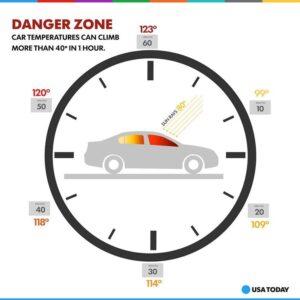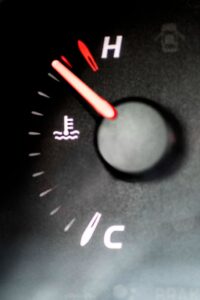🚗 How Hot Does a Car? (Real Temperatures, Risks & Safety Tips)
Welcome to technicalreader.com . Ever sat inside your car on a sunny day and felt like you just opened the gates of an oven? We’ve all been there — sweating, gasping for air, wondering how hot does a car actually get?
Well, it’s hotter than you think. Whether your car is parked under the blazing summer sun or running on a long highway trip, heat affects everything — from your comfort to your car’s engine health.
In this friendly and fact-filled guide, we’ll explore exactly how hot a car gets, why it happens, and how to stay safe and cool no matter the temperature outside.

🌡️ 1. How Hot Does a Car Get Inside When Parked in the Sun?
Let’s start with the question everyone asks — how hot does a car get inside when it’s parked?
Here’s a shocking fact: even on a mild day, the temperature inside your car can skyrocket faster than you can imagine.
-
On an 80°F (27°C) day, the temperature inside a car can hit 99°F (37°C) within 10 minutes.
-
After 30 minutes, it can reach 110°F (43°C).
-
After an hour, it can exceed 120°F (49°C) or more.
If the weather outside is 100°F (38°C), the interior of your car can reach 140–160°F (60–70°C) in less than an hour. That’s literally dangerous heat.
Why does this happen?
It’s because of the greenhouse effect. Sunlight enters through your car windows, hits the seats and dashboard, and turns into heat energy that gets trapped inside. The result? Your car becomes a mini oven.
So the answer to how hot does a car get is: a lot hotter than you’d expect — even when it doesn’t feel that hot outside.
🐶 2. Why a Hot Car Is Deadly for Kids and Pets 
Talking about how hot a car gets isn’t just about comfort — it’s about safety.
Leaving a child or pet inside a parked car, even “for a few minutes,” can be fatal. Inside a car that’s only been parked for 10 minutes, temperatures can already reach levels that cause heatstroke or death.
Children’s bodies heat up three to five times faster than adults, and pets can’t regulate their temperature effectively. Once internal body temperature passes 104°F (40°C), organ failure begins — and that can happen shockingly fast.
Never leave kids or pets in a parked car — not even for a moment. Cracking the window doesn’t help; studies show it reduces the heat only slightly.
Always “look before you lock” — make it a habit to check the back seat before leaving your car.
🔧 3. How Hot Does a Car Engine Get While Running?
Okay, now let’s pop the hood and talk about engine heat.
When people ask how hot does a car get, they often mean how hot does the engine get. The answer?
Most car engines operate safely between 195°F and 220°F (90°C–105°C).
That might sound extreme, but it’s actually ideal. Engines are designed to run hot because heat helps fuel burn efficiently and reduces emissions.
So, when your temperature gauge shows around 90°C (194°F) — relax! That’s completely normal.
However, if it climbs above 110°C (230°F), that’s a warning sign. You might be dealing with:
-
Low coolant
-
A failing radiator fan
-
A stuck thermostat
-
Or a leaking water pump
If your car overheats:
-
Pull over safely.
-
Turn off the engine.
-
Wait at least 15–30 minutes before opening the radiator cap.
Never pour cold water directly into a hot radiator — it can crack the engine block.
⚙️ 4. Is 90 Degrees Celsius Hot for a Car?
This is one of the most common “people also ask” questions about how hot does a car — and it’s an important one.
So, is 90°C hot for a car?
Nope! It’s totally normal for the engine.
Most modern cars are designed to operate around 90°C–105°C. That’s their happy zone.
However, if you’re referring to the inside of a car being 90°C, then yes — that’s dangerously hot. That level of heat can cause burns, melt plastic, and be fatal to any living being.
In short:
-
90°C engine temp: Normal ✅
-
90°C cabin temp: Deadly ❌
☀️ 5. How Hot Is a Car at 100 Degrees?
If it’s 100°F (38°C) outside, you’d think that’s already unbearable. But here’s what happens to your car:
-
Within 10 minutes, the inside temperature can hit 120°F (49°C).
-
Within 30 minutes, it’s 140°F (60°C).
-
Within an hour, it’s 150°F (65°C) or more.
So if you’re wondering how hot does a car get at 100°F, the answer is simple: dangerously hot.
Now, if we’re talking about 100°C (212°F) in the engine, that’s the upper edge of safe. Brief spikes are okay, but continuous operation at 100°C means your cooling system might be struggling.
Pro tip: Keep an eye on your temperature gauge. If it stays above normal for long, get your cooling system checked.
🌤️ 6. How Hot Does a Car Get If It’s 70°F Outside? 
Here’s a surprising fact — even when it’s just 70°F (21°C) outside, your car can still reach 100°F (38°C) inside in less than 30 minutes.
That’s why it’s so dangerous to underestimate mild weather. The greenhouse effect still works — it just takes a little longer.
Even on a cool, breezy day, if your car is parked under direct sunlight, it’s still capable of reaching harmful temperatures inside.
So the next time someone says, “It’s not that hot today,” remember: how hot a car gets doesn’t depend only on outside temperature — sunlight and time matter more.
💬 7. People Also Search For — Quick Answers
Let’s clear up the internet’s most asked questions about how hot does a car 👇
🔹 How hot does a car get?
A parked car can heat up by 20°F (11°C) in 10 minutes and reach 120–160°F (49–70°C) inside within an hour, depending on weather.
🔹 Is 90 degrees Celsius hot for a car?
For the engine, no — it’s normal. For the cabin, yes — it’s dangerously hot.
🔹 How hot is a car at 100 degrees?
If it’s 100°F outside, the car’s interior can reach 140–150°F within minutes. If your engine runs at 100°C, it’s nearing overheating range.
🔹 How hot does a car get if it’s 70 outside?
Even on a 70°F day, the inside can reach 100°F within 30 minutes — enough to cause heat stress.
🧠 8. Why Does the Temperature Rise So Fast?
It all comes down to physics — specifically, solar radiation.
When sunlight enters your car, it passes through glass easily, but once it hits the seats and dashboard, it turns into infrared heat that gets trapped. The result: the car interior becomes a sealed heat chamber.
Dark colors absorb more light, so black cars heat up faster than white ones. Leather seats, metal trims, and dark dashboards also make it worse.
🧊 9. How to Keep Your Car Cool (and Yourself Safe)
Now that you know how hot a car gets, let’s talk about how to beat the heat.
✅ Do this:
-
Park in the shade or under a tree.
-
Use reflective sunshades on your windshield.
-
Crack the windows slightly (if it’s safe).
-
Tint your windows (check legal limits).
-
Run your AC for a minute before getting in.
-
Cover steering wheels and seats with light towels.
❌ Avoid this:
-
Never leave kids, pets, or elderly people inside a parked car — even for a few minutes.
-
Don’t rely on a “cracked window” — it barely lowers heat.
-
Don’t spray cold water on a hot engine.
🧩 10. How to Handle Engine Overheating

Engine overheating can happen anytime — especially in summer. Here’s what to watch for:
Signs of overheating:
-
Temperature gauge in the red zone
-
Steam from under the hood
-
Burning smell
-
Loss of engine power
What to do:
-
Pull over immediately.
-
Turn off the engine.
-
Wait 15–30 minutes before opening the hood.
-
Check coolant levels once the engine cools.
-
If unsure, call for roadside assistance.
🎨 11. Does Car Color Affect Heat?
Yes — color makes a big difference in how hot a car gets.
-
Dark cars (black, navy, maroon): absorb more heat, making the interior 10–15°F hotter.
-
Light cars (white, silver, beige): reflect sunlight, staying cooler inside.
So, if you live in a hot climate, choosing a light-colored car can help keep temperatures down.
🧰 12. Simple Hacks to Cool Down Fast
-
Open all doors for 30 seconds before getting in — it flushes out trapped heat.
-
Use a cooling seat cushion if you drive long distances.
-
Store metal items (like seat belt buckles) away from direct sunlight.
-
Keep a foldable sunshade handy — it can drop the cabin temp by 20°F.
💬 13. The Real Answer: How Hot Does a Car Get?
Let’s wrap it up.
When you ask how hot does a car get, here’s your quick summary:
-
Inside: Can reach 120–160°F (49–70°C) in just an hour.
-
Engine: Runs best between 90°C–105°C (194°F–221°F).
-
Even on 70°F days: Interior heat can hit 100°F+ easily.
Your car is designed to handle heat — but you aren’t. Protect yourself, your passengers, and your vehicle by staying alert, staying cool, and never leaving anyone behind in a hot car.
🚘 Final Thoughts
Cars are brilliant machines — but they’re also heat magnets. Understanding how hot a car gets helps you take smarter precautions.
Whether it’s protecting your engine from overheating or keeping your loved ones safe from trapped heat, it all comes down to awareness.
So next time the sun’s blazing, take a moment before you park and remember:
A parked car can become deadly in minutes, and an overheated engine can fail in seconds.
Stay cool, stay safe — and respect the heat. 🔥


